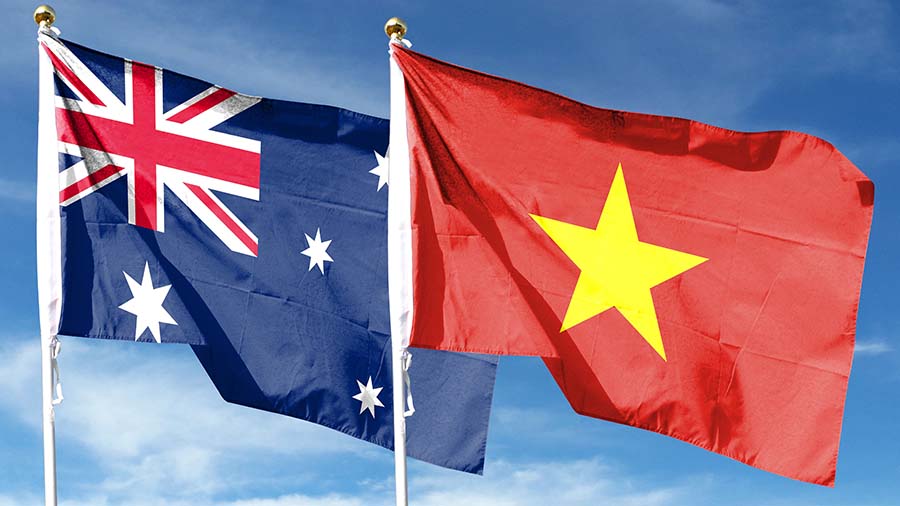4 Key Sectors to Watch in Vietnam in 2023
Vietnam’s economy has been in a state of flux throughout 2022. Its COVID-recovery has been somewhat uneven and the war in Ukraine has upended many well laid plans. With that in mind, here’s four key sectors to watch in 2023.
Vietnam’s recovery from the COVID-19 pandemic has been uneven with some sectors moving at break-neck speed while others have fallen behind. Global turmoil has also put Vietnam’s key export markets in a spin.
Nevertheless, Vietnam’s economy has continued to boom with GDP growth, in the most recent estimates from the ADB, expected to cap out at 7.5 percent for 2022.
In this context, here’s four key sectors to watch in 2023.
Energy
Vietnam signed on to a Just Energy Transition Partnership (JETP) in December of 2022. Over the course of 2023, how the agreement will be implemented and the policy change that will accompany it, should become clearer.
That clarity will have impacts across a number of sectors and the development of Vietnam’s energy market more broadly.
Vietnam’s Power Development Plan 8, for example, is still in draft form. It has been revised a number of times already and will likely be revised again to bring it inline with Vietnam’s commitments under the JETP agreement.
The next step in the agreement is a roadmap due in November that will not only detail how Vietnam will reduce its greenhouse gas emissions, but also where investment in the renewables sector should be targeted.
See also: Unpacked: Vietnam’s US$15.5 Billion JETP Agreement
Tourism
The year 2022 has been a difficult year for the tourism sector. Hoping that the end of border restrictions would see the sector bounce back, Doan Van Viet, Deputy Minister of Culture, Sports and Tourism estimated Vietnam would receive some five million tourists by the end of the year.
That number, however, is looking closer to three-and-a-half million tourists, or about 18 percent of the 19 million international arrivals Vietnam welcomed in 2019.
For comparison, Thailand received about 10 million arrivals, just shy of 25 percent of pre-COVID levels (Thailand recorded 41 million international arrivals in 2019).
This has become a pressing issue with a number of reasons for these relatively low numbers raised from visa requirements to sustainability challenges. How these issues are tackled could be detrimental to the full recovery of Vietnam’s tourism sector.
Information Technology
Vietnam’s start-up sector boomed through the pandemic to become one of the most active in Southeast Asia. According to a joint report by Do Ventures and the National innovation Centre (NIC), US$1.4 billion was invested in Vietnamese start-ups in 2021. This was a marked improvement from the previous record of US$874 million in 2019.
This wave of investment has been followed by a boost in demand for high-skilled tech workers in the Southeast Asian nation.
Adecco’s Vietnam Labour Market Update in Quarter 3/2022, found that in 2022 IT enterprises would require 530,000 workers but would fall short by 150,000. This gap between what is needed and what is available is set to increase to 195,000 by 2024.
Moving forward, Vietnam’s government is determined to digitize the Vietnamese economy and has been actively promoting an Industry 4.0 agenda. With manufacturing orders easing, there is impetus to accelerate this transition and this may lead to more favorable policy and strategic investment in IT human resources.
Manufacturing
In November of 2022, S&P’s Purchasing Managers Index registered a decline to 47.4 from 50.6 a month earlier, representing a significant contraction in Vietnam’s manufacturing sector.
With orders down, many factories were forced to lay off workers or reduce their workload considerably.
Many of these workers were also impacted by the pandemic a year earlier. This second downturn could be a blow to their morale and they may start to seek work in other sectors. Alternatively, there may be excess labor in the market that could provide unique opportunities for successful manufacturing firms to scale up their operations with relative ease.
With manufacturing the backbone of Vietnam’s economy, how this plays out, may presage what to expect from the economy more broadly in 2023.
Summary
Overall, Vietnam’s economy, alongside that of the broader global economy, is in a state of flux. As it moves through 2023 it will likely evolve in more ways than are outlined here. These, however, are four sectors that will likely be key to Vietnam’s economic success in 2023 and how they develop will be instrumental to Vietnam’s economic growth moving forward.
About Us
Vietnam Briefing is published by Asia Briefing, a subsidiary of Dezan Shira & Associates. We produce material for foreign investors throughout Eurasia, including ASEAN, China, India, Indonesia, Russia & the Silk Road. For editorial matters please contact us here and for a complimentary subscription to our products, please click here.
Dezan Shira & Associates provide business intelligence, due diligence, legal, tax and advisory services throughout the Vietnam and the Asian region. We maintain offices in Hanoi and Ho Chi Minh City, as well as throughout China, South-East Asia, India, and Russia. For assistance with investments into Vietnam please contact us at vietnam@dezshira.com or visit us at www.dezshira.com
- Previous Article Top 7 FDI Destinations in Vietnam in 2022 and Why
- Next Article China-Vietnam Border COVID-Restrictions Lifted, Flights Resume
































